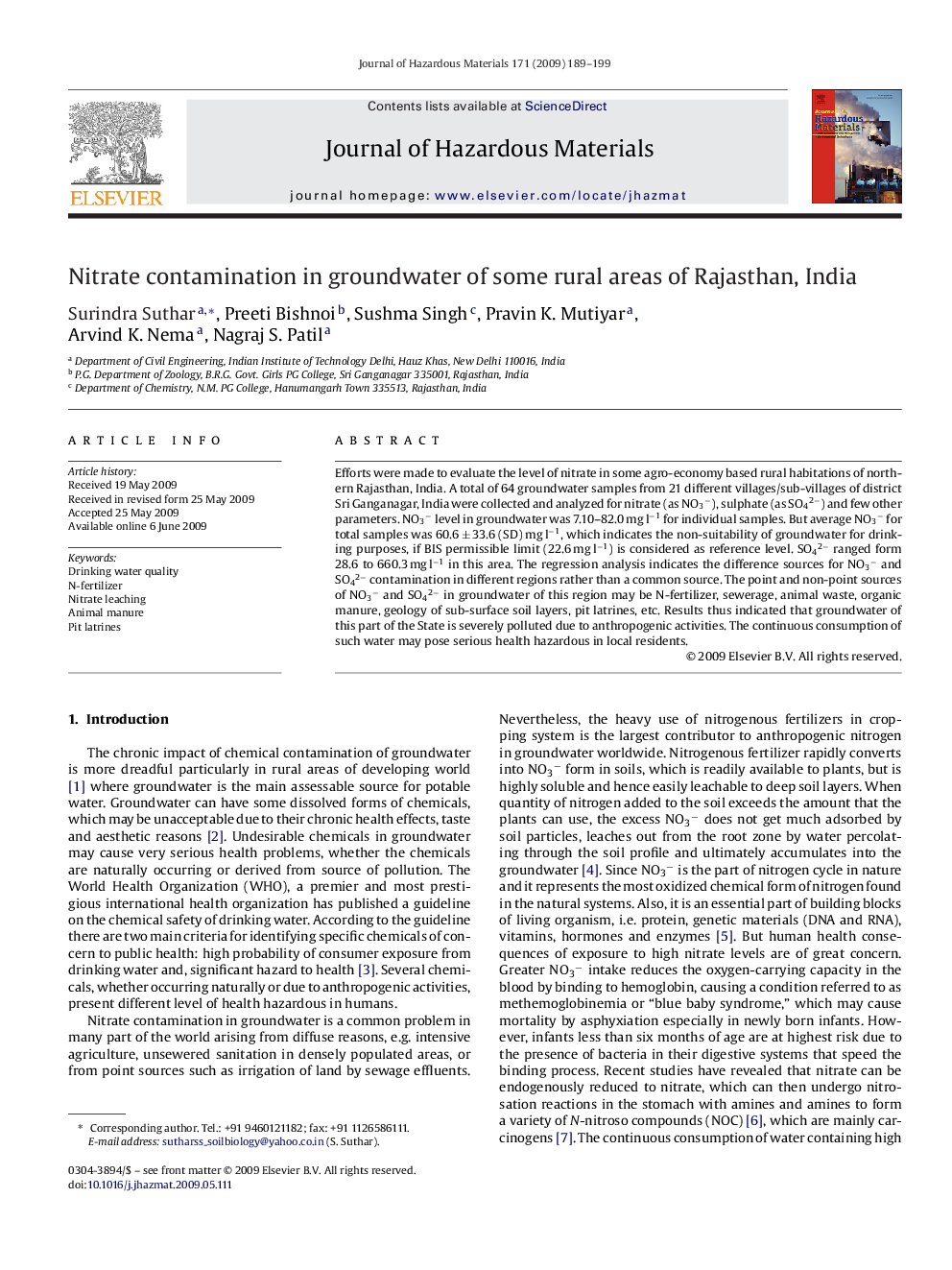| Article ID | Journal | Published Year | Pages | File Type |
|---|---|---|---|---|
| 581121 | Journal of Hazardous Materials | 2009 | 11 Pages |
Abstract
Efforts were made to evaluate the level of nitrate in some agro-economy based rural habitations of northern Rajasthan, India. A total of 64 groundwater samples from 21 different villages/sub-villages of district Sri Ganganagar, India were collected and analyzed for nitrate (as NO3â), sulphate (as SO42â) and few other parameters. NO3â level in groundwater was 7.10-82.0 mg lâ1 for individual samples. But average NO3â for total samples was 60.6 ± 33.6 (SD) mg lâ1, which indicates the non-suitability of groundwater for drinking purposes, if BIS permissible limit (22.6 mg lâ1) is considered as reference level. SO42â ranged form 28.6 to 660.3 mg lâ1 in this area. The regression analysis indicates the difference sources for NO3â and SO42â contamination in different regions rather than a common source. The point and non-point sources of NO3â and SO42â in groundwater of this region may be N-fertilizer, sewerage, animal waste, organic manure, geology of sub-surface soil layers, pit latrines, etc. Results thus indicated that groundwater of this part of the State is severely polluted due to anthropogenic activities. The continuous consumption of such water may pose serious health hazardous in local residents.
Related Topics
Physical Sciences and Engineering
Chemical Engineering
Chemical Health and Safety
Authors
Surindra Suthar, Preeti Bishnoi, Sushma Singh, Pravin K. Mutiyar, Arvind K. Nema, Nagraj S. Patil,
